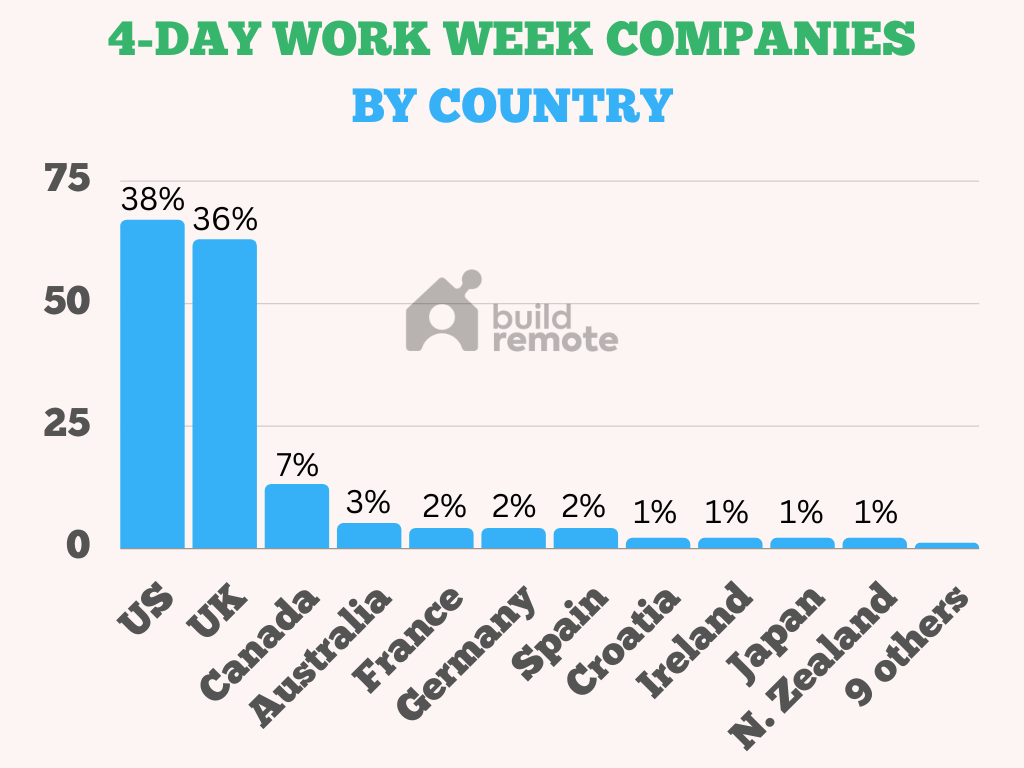Does Lithuania Have A 4-Day Work Week? (Status: Partial)

Does Lithuania have a 4-day work week?
Yes, sort of. In 2022, Lithuania passed a law that public-sector employees with children two or younger are allowed to work 32 hours per week. Private sector employees and people who do not have young children do not qualify.
Why are people talking about a 4-day work week in Lithuania?
A standard work week is 40 hours in Lithuania. On April 21, 2022, the Lithuanian government passed a new law that would allow public-sector employees with children under the age of three the right to work 32 hours per week without a reduction in pay.
The four-day work week bill will go into effect in 2023.
“The Baltic nation’s initiative aims to help families balance work and family life while reducing a gender pay gap and, effectively, divergent retirement benefits. Viktorija Cmilyte-Nielsen, the speaker of the Lithuanian parliament, said it would also help state jobs that can’t compete with higher-paying private-sector work to become more appealing.”
Milda Seputyte (Bloomberg, 2022)
How many hours per week do people work in Lithuania?
The average work week in Lithuania is 36.7 hours.
In ranking countries from the shortest work week to the longest, Lithuania ranks 166 out of 187 countries tracked by OECD (11th percentile).
- 165 countries have a shorter work week than Lithuania
- 21 countries have a longer work week than Lithuania
The average work work is calculated by taking the total annual hours worked per year divided by the average number of people in employment per year, divided by 52 weeks. Therefore, the average work week includes hours for full-time, part-time, and self-employed people. It is not the standard work week for full-time employees.
Source: OECD (2022), Hours worked (indicator). doi: 10.1787/47be1c78-en
View the average work hours per week for every country.
Have any 4-day work week bills been proposed in Lithuania?
Yes (for a public-sector employees with children under three). This will not be an option for public-sector employees with older children or no children, and it will not be an option for private-sector employees.
The bill passed on April 21, 2022. The law will go into effect in 2023.
Track every four-day work week bill around the world here.
Have there been any 4-day trials or studies done in Lithuania?
No.
Well-known four-day work week studies have taken place in Iceland (a country-wide study), Spain (waiting to launch), Scotland in 2022, and New Zealand through a private company called Perpetual Guardian.
A non-profit, 4 Day Week Global, runs just about every well-publicized four-day trial you’ve read about. Recent trials have occurred in the United States, United Kingdom, and Ireland.
Track every four-day work week study here.
How many companies in Lithuania have a 4-day work week?
0 companies have implemented a four-day work week permanently in Lithuania.
This comes from Buildremote’s database of four-day work week companies, the most comprehensive list tracking the trend.
Do you think our database is missing a company? Add a company here.
In which countries are the most 4-day companies located?
Right now, we have 177 four-day work week companies in our database across 20 countries. 38% of four-day work week companies are located in the United States, 36% are located in the United Kingdom, 7% are located in Canada. No other country takes more than a 3% share.
Here is an analysis of company adoption of the four-day work week by country.

View every country that has tested or implemented a four-day work week.
Learn more about the 4-day work week
I’ve personally run a four-day work week company since 2020. I’ve seen employee happiness and retention increase with no loss to productivity. Now I strive to provide the most comprehensive coverage of the four-day work week.
It seems that many individuals, companies, and countries are finally starting to question to standard, 40-hour work week for the first time in nearly a century. Follow along as we break down the trend.
